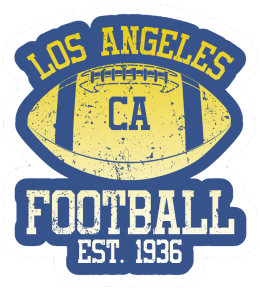- Joined
- Aug 18, 2019
- Messages
- 1,098

Will receiver market go the way of the running back market?
Supply and demand could make teams less willing to give wideouts huge money.
Will receiver market go the way of the running back market?
Multiple receivers have gotten paid this offseason. Multiple others are still waiting.Last month, 35 more were drafted — including nine in the first 34 selections.
As more and more competent receivers enter the NFL via the low-cost rookie wage scale, it’s fair to wonder if/when more and more teams will decline to pay a receiver and look for a replacement instead in the draft.
Two years ago, three teams did it. The Titans traded A.J. Brown, the Packers traded receiver Davante Adams, the Chiefs traded Tyreek Hill. (Tennessee used the first-round pick it got for Brown on his replacement, Treylon Burks. The Packers opted for quantity, drafting Christian Watson, Romeo Doubs, and Samari Toure. And the Chiefs went with a low-cost committee approach that has helped deliver every Lombardi Trophy awarded since Hill was traded.)
Now, with Vikings receiver Justin Jefferson, 49ers receiver Brandon Aiyuk, Bengals receiver Tee Higgins, and Cowboys receiver CeeDee Lamb still clamoring for new contracts (all have stayed away from OTAs), the question becomes whether they’ll eventually end up with other teams, too. The Vikings already have Jordan Addison, who’s entering year two of his first-round rookie deal. The 49ers added Ricky Pearsall in the draft. The Bengals took Jermaine Burton. And the Cowboys, well, who knows what they’re doing?
There’s another side to this issue. In 2022, the Packers, Chiefs, and Titans found trade partners who were willing to give up significant trade compensation — and who were willing to pay the players a contract they wanted. Two years later, what if there’s no team(s) to make the Vikings and Jefferson or the 49ers and Aiyuk or the Bengals and Higgins or the Cowboys and Lamb happy?
If Aiyuk wants Amon-Ra St. Brown money, maybe that’s why no one traded for him during the draft. And even though the Vikings insist they aren’t considering trading Jefferson, at times it feels like they’re waiting for someone to make them an offer they won’t refuse. With Higgins, all signs point to the Bengals squatting on him for 2024 and then letting him walk. As to Lamb and the Cowboys, again, who knows what they’re doing?
The heart of the problem could be that teams are realizing that you don’t need to give receivers big money. That you can draft one who will be, dollar-for-dollar, a better deal.
That’s what has happened over the past 20 years at the running back position. Teams generally stopped paying big money because they could roll the dice in the draft, and then develop the player. While Burks hasn’t exactly filled Brown’s shoes in Nashville, Jefferson was a Day One star after the Vikings swapped him out for Stefon Diggs in 2020. And the Packers are currently regarded as having a great group of young receivers. And, again, the Chiefs have won every Super Bowl played since they traded Hill.
The problem for the Vikings, 49ers, Bengals and Cowboys is that the 2024 draft has come and gone. Unless there’s a player-for-player(s) swap to be done, trading the receivers now won’t help their former teams this season.
The bigger question is whether a trade will ever materialize. Why give up a first-round pick (or more) that could become a low-cost receiver for three or four years and likewise make a massive investment in a player whose shelf life falls closer to tailback than quarterback?
I’m a card-carrying member, if not an unofficial captain, of the Pay The Players brigade. However, just as the supply of running backs eventually impacted demand (and price), the same thing could be happening with receivers.
The very best should still get paid. The challenge becomes distinguishing the very best from those that can be readily replaced at a much lower cost. Or, in the case of Jefferson, drawing a line as to how much the very best should get.








